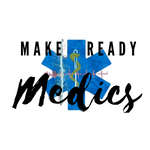There is a ton of ECG arrhythmias books on the market. Weighing the cost of many of these books picking the right one can save you time in learning and money. Being I am always reviewing and studying my craft I hope to give you some insight on which one to pick up. Picking the right book depends on your current knowledge base and skills set to your profession.
Paramedics, nurses, respiratory and physicians all learn the same basic knowledge but the depth and breadth of understanding varies. A paramedics skills in ECG reading is different then a physician that is only required ACLS for conscious sedation in the office. Not all medical professionals need in-depth understanding of 12 leads.
The best all time ECG book for reference and studying
Rapid interpretation of EKG’s by Dale Dubin, MD. Is hands down a the best book out there for a simple understanding of ECG. I have 2 copies. Its strength comes from being written as a self study guide with simple illustrations and pictures. Its large print and an easy read. I have seen more doctors, nurses and medics use this book for there entire career to occasionally review. I seen resident physicians carrying it At University of Chicago; As well as 20 year ER physicians flipping thru right before ACLS. (Back in the day when ACLS was the difference between keeping your job and looking for another one) The book covers the from ECG history, lead placement, and interpretation of both lead 2 and 12 leads. This books biggest strength is in the simple explanation of the electrophysiology and pathology of arrhythmias in basic terms. Where this books lacks however is a means of practice reading ECG strips.
The best Lead two EKG practice books
When first learning ECG interpretation its best to get it broken down in simple terms. The second step is to practice. practice and practice. These books both provide a step by step understanding of reading lead 2 in chunks by origin of the rhythm. They then give you practice rhythms in that section and lastly a final challenge of all of the arrhythmias in once final chapter. Thy Basic Arrhythmias by Gail Walraven has more practice rhythms but comes at a cost. The book also comes with flash cards. I find these books relatively equal. While they are great at practice they lack in quality 12 lead interpretation.
The best explanation out there for 12 lead interpretation
When it comes to depth and breath of 12 leads in relatively simple terms The 12-lead ECG in Acute Coronary Syndromes can’t be beat. Both these authors have been practicing and teaching what they preach for decades. There vast knowledge shared in a full size 12 lead ECG cannot be beat. The only thing that could make this book better is more practice ECG.
The 12 lead ECG books worth and Honorable mention
12 lead ECG for the Acute and Critical Care Providers by Bob Page is a great resource for people who have attended his lectures or has more advanced training. It does provide a resource for practice ECG. The weakness is in the order of the content in the book is not designed for those without a more advanced understanding.
150 ECG cases does a great job at taking all of the information the above books and puts it in really life scenarios. While it lacks in instruction its worth checking out.

With all these ECG books I strongly urge you to get the physical copy. If your looking for another means of practicing lead 2 rapid interpretation check out the link below for a free game online. I have all of my paramedic students do this game as a challenge against myself and their piers. The photo above is a student who got 65 rhythms correct on the first try in 60 seconds. Once you get about 60 in 60 seconds the score % gets a little glitchy. Check and see how you compare.
